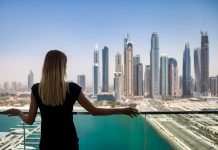Fast fashion giant Shein is facing a reckoning. As well as staring down the barrel of tariffs, the brand is now under intense scrutiny for alleged labor abuses, environmental damage, and trade dumping.
In the UK and EU, consumer trust is faltering, and a growing majority say they’re now less likely to buy from the site. Young shoppers increasingly reward brands with strong ethical standards—over 80% factor in a brand’s mission, and most are willing to pay more. These numbers send a clear signal: sustainability sells.
And it’s not just Shein.
As sustainability mandates tighten and geopolitical risks rise, sourcing from China has become increasingly precarious. The U.S. has clamped down through import restrictions like the Uyghur Forced Labor Prevention Act (UFLPA), while the EU enforces rigorous standards through its Circular Economy Action Plan and the Ecodesign for Sustainable Products Regulation (ESPR), which came into effect in July 2024. These regulations demand product-level transparency, durability, and recyclability—and ban the destruction of unsold textile inventory. Suddenly, what was once cheap and fast now looks risky and unsustainable.
This global pivot is forcing brands to ask a critical question: Where next? The answer might surprise you.
Long viewed as a low-cost manufacturing hub, Bangladesh has gained a definitive competitive edge as the reliable, future-proof, ESG-compliant sourcing hub Western brands need.
The country is home to 60 of the world’s top 100 LEED-certified factories, including nine out of the top ten. In just the first five months of 2024, 12 more factories earned certification. This green momentum extends beyond factory gates, seamlessly transitioning into circular economy initiatives that amplify both environmental and economic returns.
With its strong foundation in cotton fiber production, Bangladesh has the potential to generate $1.2 billion from recycled textiles alone and could unlock a further $4.5 billion opportunity by scaling reuse and material recovery. These ambitions are reinforced by key initiatives such as Bangladesh Bank’s $200 million Green Transformation Fund, supporting eco-friendly textile and leather projects, and IFC’s Partnership for Cleaner Textile (PaCT), which has already empowered over 450 factories to save 35 billion liters of freshwater annually, significantly enhancing their overall efficiency.
For Bangladesh, sustainability isn’t just about ethics—it’s about gaining market share.
Earlier this year, Bangladesh welcomed its first-ever Dutch Circular Textile Trade Mission, aimed at promoting sustainability and forging partnerships between European innovators and local manufacturers. UNIDO’s SWITCH2CE program is positioning Bangladesh as a circular fashion leader, aligning the textiles industry with EU standards and transforming it into a future-ready sourcing hub. Soon, the Sustainable Apparel Forum 2025 in Dhaka will convene global buyers, policymakers, and sustainability leaders to set the agenda.
Such initiatives are cementing Bangladesh’s global leadership—backed by $1 billion in climate funding to fuel green innovation.
This evolution runs alongside Bangladesh’s broader economic transformation as it prepares to graduate from Least Developed Country (LDC) status in 2026 with a suite of major infrastructure projects. The Dhaka Elevated Expressway is built with sustainable materials and energy-efficient technologies, and the expansion of the Cox’s Bazar highway network is designed to minimize environmental impact.
Model industrial zones like the Korean Export Processing Zone (KEPZ) in Chattogram are beacons of how to industrialize differently. Spread across 2,492 beautifully landscaped acres, the KEPZ’s cutting-edge green manufacturing features solar-powered infrastructure, tree-lined avenues, and integrated healthcare and education for workers.
New, eco-friendly five-star hotels are also opening near major industrial hubs, enhancing the country’s appeal as a modern, climate-conscious economic partner.
Sustainability is no longer a slogan. It’s a sales driver, a sourcing filter, and a passport to global markets. And as the world distances itself from high-risk, opaque supply chains, one thing is clear: Bangladesh isn’t riding the wave of sustainable sourcing—it’s helping shape the tide.
For brands, investors, and policymakers seeking resilience, scale, and ESG integrity, the smart bet is no longer on fast—it’s on future-ready. And right now, that future points straight to Dhaka.


































